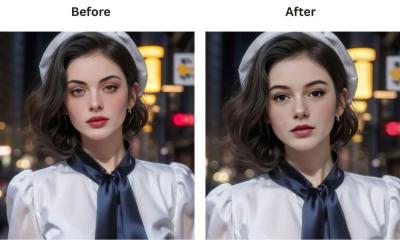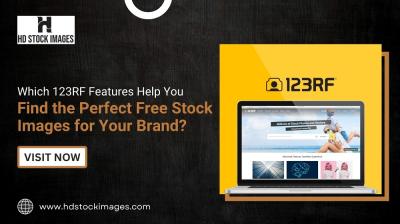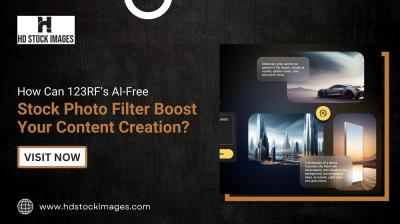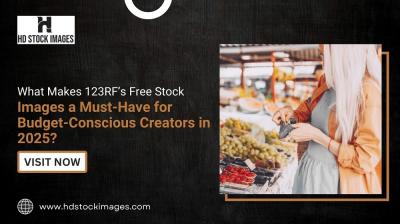Brochure design is an art that combines creativity with strategic marketing. A well-crafted brochure serves as a powerful tool for businesses, effectively communicating their message while grabbing the attention of potential customers. Whether you’re promoting a product, service, or event, a stunning brochure can make all the difference in how your audience perceives your brand. In this era of digital marketing, brochures still hold a significant place, providing a tangible representation of your business. Let’s dive into what makes brochure design so essential and how you can elevate your designs.
Understanding Vector Graphics
When it comes to creating eye-catching brochures, understanding vector graphics is key. Unlike raster images, which are made up of pixels, vector graphics are created using mathematical equations that define shapes, lines, and colors. This fundamental difference means that vector images can be scaled infinitely without losing quality, making them perfect for print materials like brochures. Here’s why vector graphics should be your go-to choice:
- Scalability: Whether you’re printing a small flyer or a large poster, vector graphics maintain clarity and sharpness at any size.
- Editing Flexibility: Each element in a vector graphic can be easily manipulated, allowing designers to adjust colors, shapes, and sizes effortlessly.
- File Size: Vector files are typically smaller than raster images, making them easier to share and store.
Popular software like Adobe Illustrator and CorelDRAW specialize in creating vector graphics, enabling designers to craft intricate designs with precision. Here’s a quick comparison of vector vs. raster graphics:
| Feature | Vector Graphics | Raster Graphics |
|---|---|---|
| Scalability | Infinitely scalable | Quality degrades when scaled |
| File Size | Usually smaller | Larger file sizes |
| Best For | Logos, illustrations, and typography | Photographs and detailed images |
By leveraging the power of vector graphics, you can create stunning brochures that not only look professional but also resonate with your audience. As you move forward in your design journey, keep these principles in mind to create the most effective brochures possible.
Also Read This: Mirroring an Image on a Mac
Exploring VectorStock Resources
When it comes to creating stunning brochures, having the right resources at your fingertips can make all the difference. VectorStock is a treasure trove of high-quality graphics, illustrations, and templates that can elevate your design game. Let’s dive into what makes VectorStock a go-to platform for brochure design.
Firstly, *VectorStock boasts millions of vectors and illustrations. Whether you need a whimsical illustration for a children's event or sleek graphics for a corporate brochure, you’re bound to find something that fits your vision. Here are some key features to explore:
- Search Functionality: Use specific keywords to find exactly what you’re looking for. Need a sunset graphic? Just type “sunset” and watch the options populate!
- Categories and Collections: Browse through various categories like “Business,” “Travel,” or “Food” to ignite your creativity.
- Customizable Templates: Many templates are editable, allowing you to tweak colors, fonts, and layouts to fit your brand.
In addition to vectors, VectorStock also offers stock photos and videos*. This means you can create a cohesive look for your brochures by using images that complement your vector artwork. Plus, if you want to see how others are using the resources, check out their community gallery for inspiration.
Also Read This: How to Resize an Image for Email Attachments
Step-by-Step Guide to Designing Brochures
Creating an eye-catching brochure may seem daunting, but with a structured approach, you can craft something truly impressive. Here’s a step-by-step guide to help you navigate the design process using VectorStock.
- Define Your Purpose: Before you even open VectorStock, ask yourself: What is the goal of your brochure? Is it to inform, promote, or invite?
- Choose the Right Format: Brochures come in different formats — tri-fold, bi-fold, or even z-fold. Decide which layout best suits your content.
- Gather Resources: Visit VectorStock and start searching for graphics and templates that align with your theme. Save your favorites for easy access.
- Design Your Layout: Use design software like Adobe Illustrator or online tools like Canva to start laying out your brochure. Import your chosen VectorStock resources and arrange them aesthetically.
- Add Text: Keep your text concise. Use headings, bullet points, and bold text to emphasize key points, making it easy for readers to scan.
- Review and Edit: Take a step back and review your design. Check for any typos, and ensure all elements are aligned and visually balanced.
- Print and Distribute: Once you’re satisfied, save your brochure in a high-resolution format and consider your printing options. Choose quality paper to make a lasting impression!
Following these steps while utilizing VectorStock’s vast library will help you create stunning brochures that effectively communicate your message. Happy designing!
Also Read This: How to Find Your Images on Adobe Stock
5. Tips for Effective Brochure Layout
Creating a stunning brochure isn't just about pretty images; it’s about a well-thought-out layout that guides the reader’s eye and delivers your message effectively. Here are some tips to help you design an effective brochure layout:
- Define Your Purpose: Before you start designing, know what you want to achieve. Is it to promote a product, share information, or invite people to an event? A clear objective will shape your layout.
- Grid System: Use a grid layout to ensure everything is aligned and organized. This helps maintain a clean, professional look, making it easier for readers to navigate your content.
- Hierarchy of Information: Prioritize information by size and placement. Use larger fonts for headings and important details, while keeping secondary information smaller. This directs the reader’s attention effectively.
- White Space: Don’t be afraid of empty space! It can enhance readability and focus on key elements without overwhelming the reader.
- Consistent Branding: Use colors, fonts, and logos that align with your brand identity. Consistency creates a cohesive look that strengthens brand recognition.
By applying these tips, you can create a brochure layout that not only looks great but also communicates your message clearly and effectively!
Also Read This: how to make image on google slides transparent
6. Incorporating Visual Elements
Visual elements are the lifeblood of an engaging brochure. They can capture attention, evoke emotions, and reinforce your message. Here’s how to effectively incorporate them:
- High-Quality Images: Use professional photos or illustrations that resonate with your audience. Ensure they are high resolution to avoid pixelation.
- Infographics: Presenting information visually can simplify complex data. Infographics can communicate statistics or processes in a visually appealing way.
- Icons: Small icons can enhance understanding and add flair. Use them to break down sections or highlight key features.
- Color Palette: Choose a color scheme that complements your brand but also evokes the right emotions. For example, blue can convey trust, while red can inspire urgency.
- Consistency: Ensure that all visual elements follow a consistent style. This includes color, line thickness, and illustration style, which will create a harmonious look.
By thoughtfully integrating these visual elements, your brochure will not only attract attention but also hold it, guiding readers effortlessly through your content.
Also Read This: Mastering Duets on YouTube Shorts with Your Android Device
7. Finalizing and Printing Your Brochure
Once you've designed your brochure using VectorStock, the next crucial step is finalizing it for printing. This phase is where you ensure that everything looks perfect and is ready to make a great impression.
Start by reviewing your design. Here are some key aspects to check:
- Proofread: Make sure there are no typos or grammatical errors. Sometimes, a fresh pair of eyes can catch mistakes you might have overlooked.
- Colors: Verify that the colors match your brand guidelines. If you’re printing in CMYK, check that your colors look good in that format.
- Images: Ensure all images are high-resolution (300 DPI is a good standard) to avoid pixelation in print.
- Bleed and Trim: Add a bleed area of about 0.125 inches to prevent any white edges after trimming.
After your final checks, it’s time to choose a printing method. Here are some options:
| Printing Option | Description |
|---|---|
| Digital Printing | Great for small quantities and quick turnaround times. |
| Offset Printing | Ideal for large volumes with consistent quality. |
| Online Printing Services | Convenient and often cost-effective for a range of options. |
Finally, review the proofs provided by your printer before giving the go-ahead for the full print run. This ensures that your beautiful design translates perfectly onto paper!
8. Conclusion and Additional Resources
Creating stunning brochures with VectorStock is not just about design; it’s about crafting a powerful marketing tool that resonates with your audience. By following the steps outlined in this guide, you can develop eye-catching brochures that effectively communicate your message.
As you wrap up your project, here are some additional resources to help you further:
- VectorStock Tutorials: Check out their tutorial section for tips on using vectors effectively.
- Design Inspiration: Websites like Behance and Dribbble showcase creative designs that can spark your imagination.
- Printing Tips: Look for blogs or articles specific to printing techniques for deeper insights.
Remember, the goal of your brochure is to inform, engage, and inspire action. Keep experimenting with your designs, and don’t hesitate to seek feedback from peers. Happy designing!
 admin
admin








